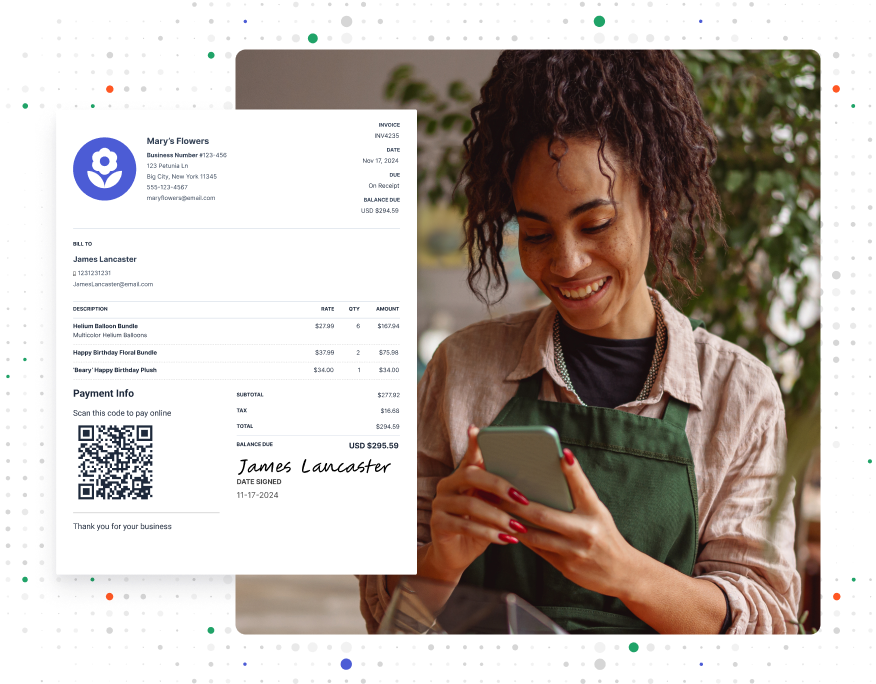What Is the Accounting Equation? Formula and Steps

Running a successful business involves more than just providing a great product or service. You also have to manage your company’s finances wisely.
You can use many different tools to delve into the details of your company’s financial picture during each accounting cycle. Your balance sheet is one of the most important. It’s a financial statement that shows your assets, liabilities, and equity at a given point in time.
Balance sheets provide a comprehensive overview of your business finances. But unfortunately, they can be long and complicated. That’s where the accounting equation comes in.
The accounting equation is a simple formula that gives you a big-picture assessment of your company at a glance. It helps you confirm that your balance sheet is actually balanced. It’s one of the most important small business accounting basics, so if you aren’t familiar, here’s a guide to get you up to speed.
The Accounting Equation: An Overview
The basic accounting equation is also known as the balance sheet equation. It states that assets should be equal to a company’s liabilities and equity.
This equation is an important tool in double-entry accounting, which records every transaction twice in at least two line items. For example, if you take out a $10,000 business loan, you would record the $10,000 debt as a liability. At the same time, the $10,000 the bank paid you would now be considered a company asset. You would also record it among your assets.
Double-entry accounting improves accuracy since recording entries twice reduces errors. With this approach, assets should always equal liabilities plus the owners’ equity. The accounting equation confirms and proves it.
The equation is also helpful if you want to calculate liabilities or equity. For example, if you know what your liabilities and assets equal, you can subtract liabilities from assets to get equity.
RELATED ARTICLE — How To Calculate Cash Flow
Accounting Equation Formula

Looking at the accounting equation formula is the best way to understand it. Here’s what it looks like:
Assets = Liabilities + Equity
Here are the different components of the equation:
- Assets. Assets are what your company owns. Examples include raw materials, cash on hand, and accounts receivable. Other property your company owns, such as a company car or the building you operate out of, may also count as business assets.
- Liabilities. Liabilities are your financial obligations. Business loans or a mortgage on commercial properties are examples.
- Equity. Equity is the value left in the business after accounting for assets and liabilities. It’s what would be left after liquidation. Owners can cash in on the equity by selling the business or accessing it in the form of dividend payments.
The accounting equation shows how these three components that make up your company’s value interact. The more you can grow your assets and shrink your liabilities, the greater the equity in your business. More equity means more value.
RELATED ARTICLE — Accrual Basis Accounting: Definition and How It Works
Expanded Accounting Equation
If you want more details about your company’s finances, you can use an expanded accounting equation. It breaks equity down into different categories.
This breakdown is important because in the basic equation, equity is pretty broad. It includes all the value a company gives its owners. But owners can have different types of interests in a business. The expanded equation examines the owner’s stake in the company more closely.
Here’s what the expanded equation looks like:
Assets = Liabilities + Contributed Capital + Beginning Retained Earnings + Revenue – Expenses – Dividends
With this expanded formula, you can see more closely at where money is going. Here’s what the new categories in the formula mean:
- Contributed Capital. This is the money the owners put into the company.
- Beginning Retained Earnings. Beginning retained earnings refers to income from the prior accounting period that the company didn’t pay out to owners.
- Revenue. Revenue is what the company earned during the accounting period.
- Expenses. Expenses refer to all the money the company spends. You have to subtract expenses to calculate owner equity.
- Dividends. Dividends are money the company pays to shareholders or owners. These are also subtracted because a dividend payment reduces the value or equity still remaining in the business.
Accounting Equation Example
An example can make the accounting equation clearer. Let’s say your balance sheet shows that your assets are $100,000 and your liabilities are $65,000.
Here’s what the formula looks like based on this data:
$100,000 = $65,000 + Equity
You can solve for the missing equity peace by subtracting liabilities from assets. Here, the owner’s equity is equal to $35,000.
How To Rock the Accounting Equation

Here are some tips for making the most out of your math:
1. Use Accounting Software
Accounting software makes any financial reporting easier. It can help you produce your balance sheet and can confirm that everything is correct. It can also provide more detailed reports so you can take a close look at assets, equity, and expenses. This gives you a better understanding of your company’s financial situation.
2. Check Entries for Accuracy
The accounting equation helps you confirm that your double-entry bookkeeping system is working. But you also have to classify the entries on your balance sheet properly. If you make mistakes when inputting debits or credits, the math may not add up. Double-check everything before making any final calls.
3. Include All Relevant Numbers
Try not to forget different types of assets, capital, and liabilities. Comb through your records and make sure you include as much as possible in the equation. Omitting something could lead to incorrect calculations and big mistakes.
Simplify Accounting With Invoice Simple
Both assets and liabilities are key components of the accounting equation, just like expenses. And while tracking business expenses can be a hassle, it doesn’t have to be.
Thanks to Invoice Simple, recording expenses has never been easier. The business expense and receipt tracker lets you scan receipts and capture the information from anywhere. All expense data is ready to export into a summary report when you need it.
Start Your First
Invoice Today
Create customized and professional
invoices and connect with clients
